| |
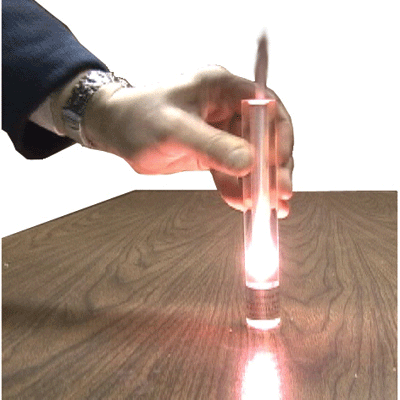 Click to Enlarge
Click to Enlarge
|
Fire Syringe (LSE)
| Our 15-110 Science First Fire Syringe is a classic example of the Ideal Gas Law (PV=nRT). By compressing air into a smaller volume, we are also increasing the temperature. Looking at the formula, a large increase in P, a small decrease in V, with n and R being constant, leads to a large increase in T. |
| • Kit includes: aluminum piston, lexan piston chamber, and 2 custom made o-rings. You will also need to supply tiny pieces of non-moisturized tissue paper. |
| • Setup: The setup is quick and easy. Pull out the syringe, drop in 3-4 tiny 5 mm or so tissue pieces. Then re-insert the aluminum piston gently so that it just enters the mouth of the piston chamber. Holding the unit flat on a non-slip surface, push down the aluminum piston with some force and speed. You will see a quick flask of fire, which will last until all available oxygen is used up. |
| • How it works: Air gets very hot when compressed under high pressure. If you have ever pumped up a bicycle tire, you have noticed the heat generated. When the air in the fire syringe is compressed, it is done so fast and efficiently, so that it can reach a temperature of over 260 degrees C (500 degrees F). As paper burns at 235 dgrees C (454 degrees F), the small pieces of tissue paper ignite. |
| • Maintenance: Your syringe has been pre-lubricated and should not need any more. After each use, blow out the carbon dust from the small fire you just made and it is good to use again. |
See Enlarge
|
|
|
|
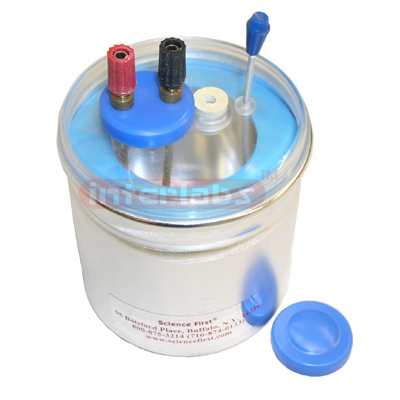 Click to Enlarge
Click to Enlarge
|
Electric Calorimeter (LSE)
Our simple electric calorimeter helps you to determine the electrical equivalent of heat. It features a removable spring heating element that operates on 0 to 6 V DC. The unit consists of an aluminum outer can, a 1.7 cm thick styrofoam lining, plastic insulator ring and aluminum heat reservoir designed to control heat loss. The lid accepts heating element, stirrer and thermometer. Cover cap included.
See Enlarge
|
|
|
|
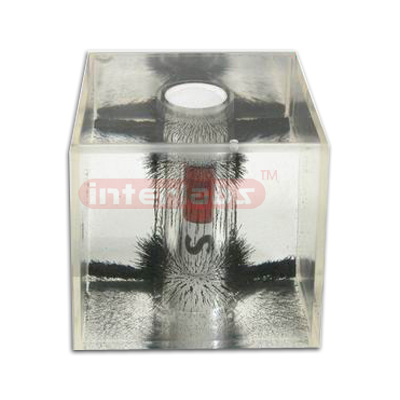 Click to Enlarge
Click to Enlarge
|
Magnetic Field Viewer, 3D (LSE)
Explore the mysteries of magnets in three dimensions! Iron filings mixed with oil inside an acrylic plastic cube will react in fascinating ways to a magnetic field or electric current.
See Enlarge
|
|
|
|
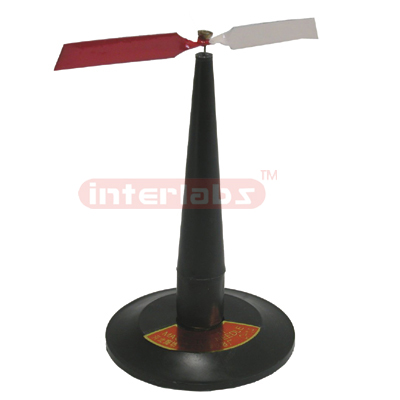 Click to Enlarge
Click to Enlarge
|
Magnetic Needle (LSE)
Demonstrate the action of a compass and the earth's magnetic field. Our magnetic needle, 145 mm long, has North marked in red and pivots on a sensitive brass and nylon bearing. Non-magnetic support is 9.9 cm high with 5.9 cm round base.
See Enlarge
|
|
|
|
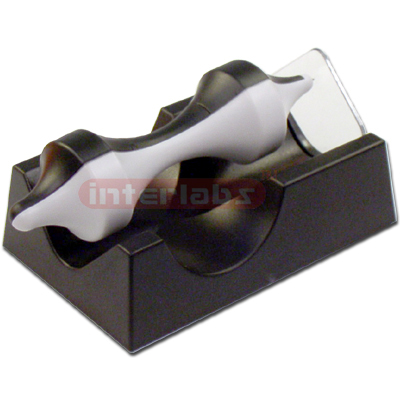 Click to Enlarge
Click to Enlarge
|
Magnet, Levitating Vortex (LSE)
Demonstrate magnet levitation and frictional force with our two-tone device. Black and white sections allow you to measure rotation speed with a stroboscope.
See Enlarge
|
|
|
|
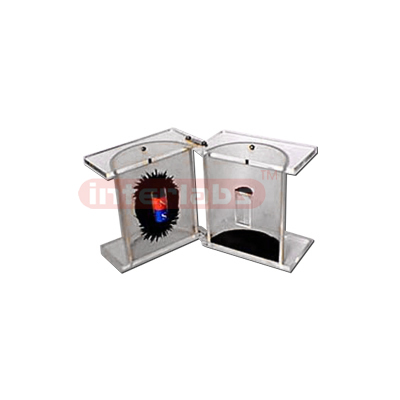 Click to Enlarge
Click to Enlarge
|
Magneic Field Demo, Two Halves (LSE)
Three-dimensional magnetic fields are an open and shut case with our new folding magnetic field apparatus.
See Enlarge
|
|
|
|
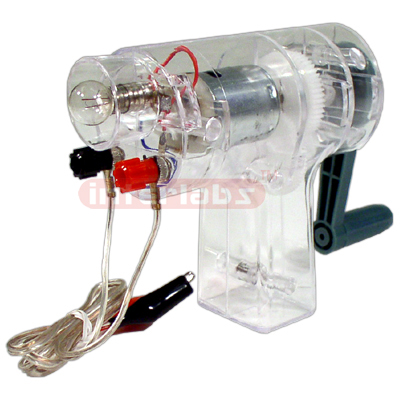 Click to Enlarge
Click to Enlarge
|
Hand Generator (LSE)
This hand-driven generator when wound, creates about 5 volts of direct current. The faster the student turns the handle, the brighter the bulb glows. It is an ideal tool for learning about generators and how mechanical energy is converted to electrical energy. The clear housing allows students to watch the coils, terminals and gears.
See Enlarge
|
|
|
|
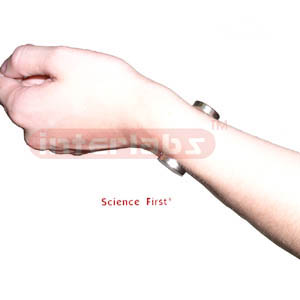 Click to Enlarge
Click to Enlarge
|
Neodymium Magnets (LSE)
These little magnets are powerful enough to attract through your arm! Use for a variety of science labs and kits. Value priced.
Item cannot ship by air.
See Enlarge
|
|
|
|
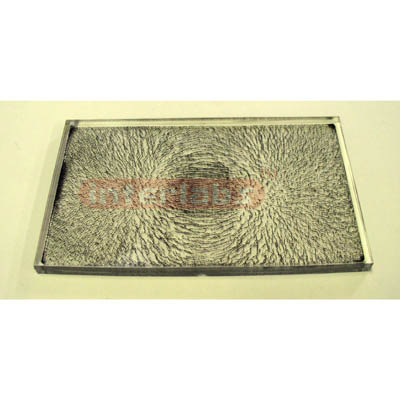 Click to Enlarge
Click to Enlarge
|
2D Magnetic Field Demonstrator (LSE)
Wow your students with this handy magnetic field demonstration! Shake the unit so that the iron filings are distributed throughout the unit. This transparent acrylic case holds iron filings in such a way as to maximize the visible lines of force from a magnet placed either on top of or underneath the case. Note: Magnets not included.
See Enlarge
|
|
|
|
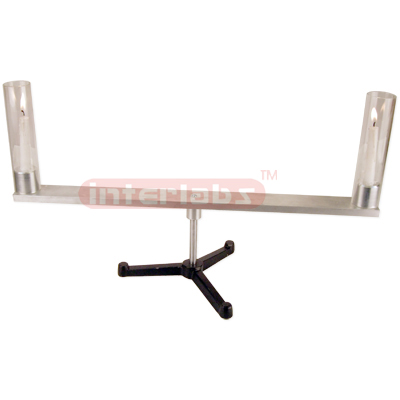 Click to Enlarge
Click to Enlarge
|
Rotating Candle Apparatus (LSE)
A great way to understand centripetal force and centrifugal force. Why do the flames turn in instead of out when spun on the rotator?
See Enlarge
|
|
|
|
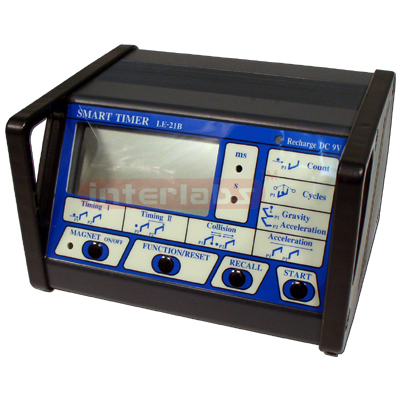 Click to Enlarge
Click to Enlarge
|
Smart Photogate Timer (LSE)
Why pay more when this accurate and versatile timer does far more for far less? You can measure the time interval between two photogates, measure the time it takes to pass through one photogate, measure acceleration of a released ball, determine the acceleration due to gravity (with a picket fence), determine elastic and inelastic collision times, calculate cycles, determine the frequency of a rotating object, determine the period of a pendulum, and count time with great accuracy. Up to 20 data points can be stored in memory for instant recall, allowing you to watch the experiment as it happens and perform calculations after the fact. Unlike other basic models, our version even includes a magnetic ball drop. The unit is rechargeable and may be used with or without the adaptor, making it useful in a variety of settings. With operating instructions.
|
Smart Photogate Timer features include:
• Seven (7) functions
• Two (2) photogates
• Magnetic ball release
• AC and battery powered (rechargeable)
• Measures time to 0.0001 seconds
• Functions have up to 20 data points stored in memory for recall
• Instructions |
See Enlarge
|
|
|
|
 Click to Enlarge
Click to Enlarge
|
Liquid Accelerometer (LSE)
| Go with the flow! Visualize horizontal acceleration - at a special low price. |
| What happens to the oceans under the full moon? What flings you outward when your car cuts a corner too sharply? |
| It's easy to visualize the effects of inertial movement with this low cost device. Horizontal acceleration creates characteristic wave patterns to demonstrate inertial movement. Now, because liquid moves in the direction opposite to acceleration, you can actually see these waves by watching the pattern created by the colored liquid. You can even measure the patterns with the imprinted horizontal and vertical grid. |
•Demonstrate gravitational and uniform acceleration
•Illustrate acceleration down an inclined plane
•Use with Dynamics Cars, Rotating Platform, turntable, or amusement park physics |
| Liquid accelerometer includes: |
•Hook and loop connector to attach to a dynamics car or rotating platform |
| •Grid lines to quantify both vertical and horizontal movement |
| •Instructions |
| •You provide water and food coloring |
See Enlarge
|
|
|
|
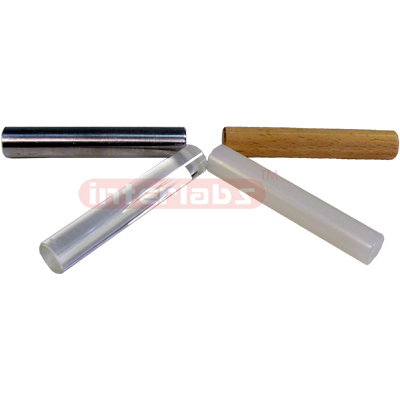 Click to Enlarge
Click to Enlarge
|
Equal Volume Mixed Materials (LSE)
Experiment with volume and density with our set of diverse materials.
Our four cylinders of aluminum, glass, nylon and wood each have the same volume. 13mm x 7.5cm.
See Enlarge
|
|
|
|
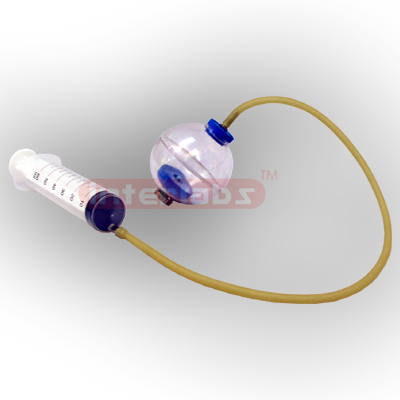 Click to Enlarge
Click to Enlarge
|
Diving Bell (LSE)
Underwater exploration has fascinated us since we first started sailing the seas. The diving bell in one form or another has allowed us to breathe under water. Used by such notables as Alexander the Great, Bernoulli and Pascal, it is essentially a submerged container filled with air, the air pressure holding the water at bay. Our simplified demo contains a bell, syringe, connecting tube and instructions. First draw the air out with the syringe; then place the ball in water and watch it sink. When you inject air slowly back into the ball, it rises.
See Enlarge
|
|
|
|
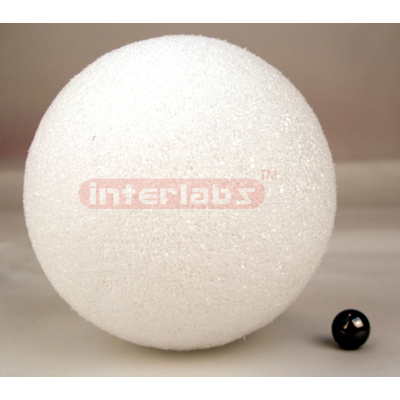 Click to Enlarge
Click to Enlarge
|
Pressure Paradox Kit (LSE)
What weighs more, a large styrofoam ball or a small heavy steel ball? The light styrofoam ball -- of course... or does it? Show how the sense of touch changes how we feel pressure. Great intro into density. Contains large ball, small ball, theory.
See Enlarge
|
|
|
|







